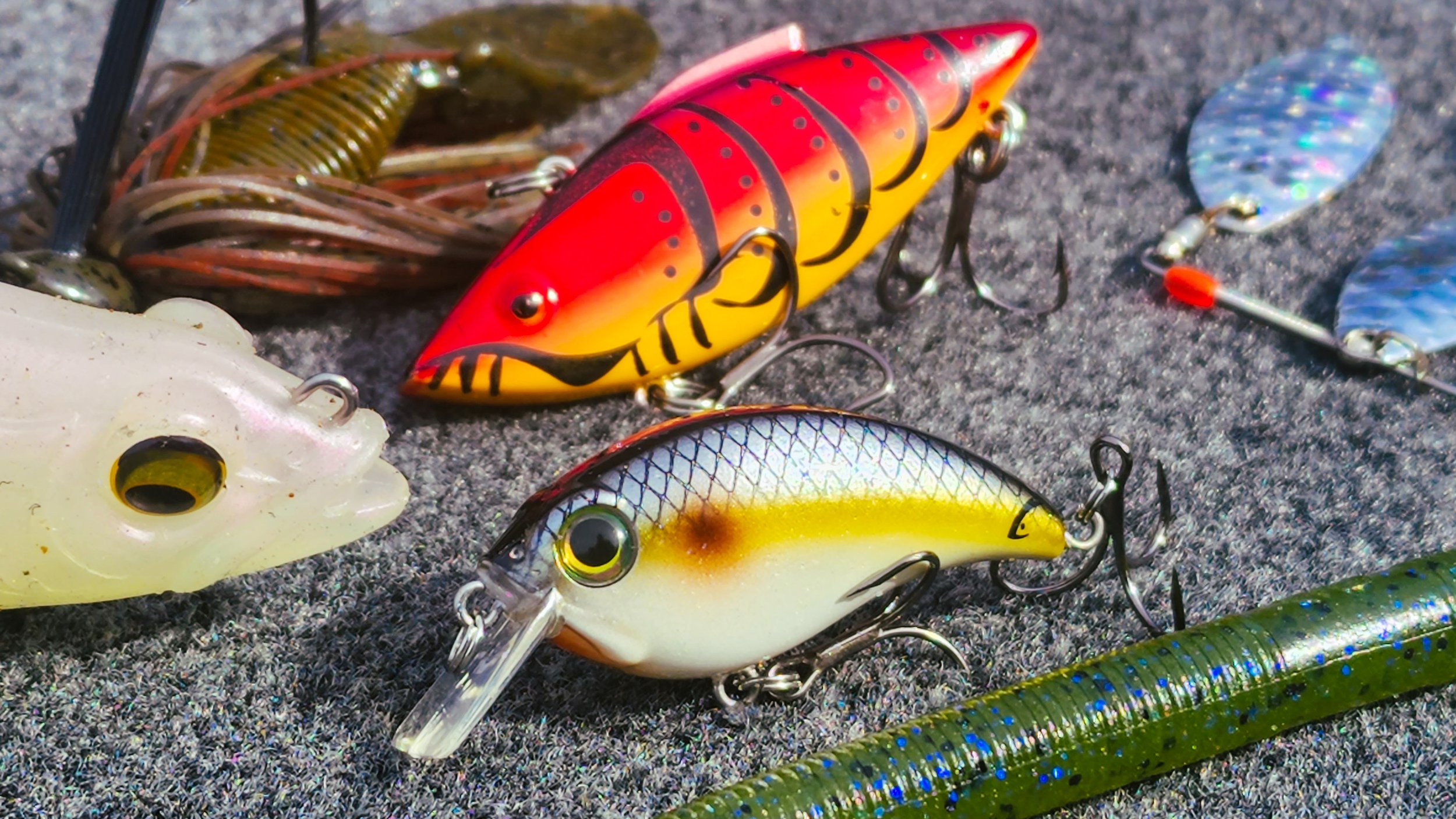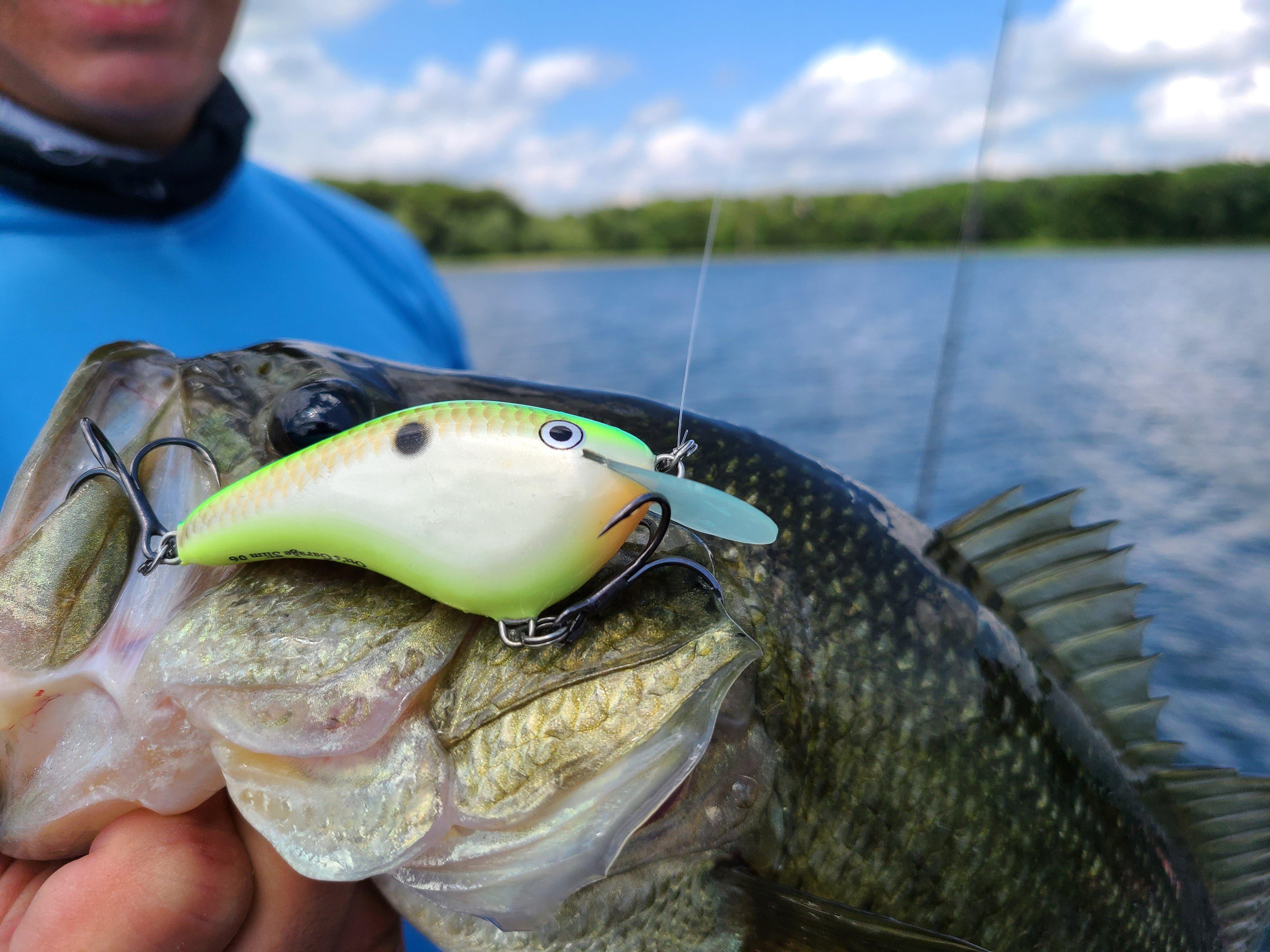Seasonal Best Bass Lures Strategies: Catch More Fish All Year
Discover the Keys Behind Reliable Bass Lures to Improve Your Fishing Experience
Recognizing the intricacies of bass Lures can greatly affect angling success. Various Lures serve unique functions, from crankbaits made for vast insurance coverage to jigs that target details structures. The efficiency of these Lures usually hinges on variables such as shade, activity, and seasonal patterns. By mastering these aspects, anglers can unlock an extra gratifying experience. Yet, the concern remains: which techniques will generate the finest outcomes on the water?
Comprehending Bass Behavior and Environment
Comprehending the habits and environment of bass is important for anglers seeking success on the water. Bass are functional fish located in numerous freshwater settings, consisting of lakes, rivers, and ponds. They tend to choose areas with structure, such as immersed rocks, dropped trees, and aquatic plant life, which offer sanctuary and hunting grounds.
Seasonal patterns significantly affect their actions; in warmer months, bass often inhabit shallow waters, while they pull away to much deeper locations throughout colder seasons. Bass Fishing Lures. Their feeding behaviors are opportunistic, with a diet regimen consisting primarily of smaller sized fish, insects, and shellfishes
Time of day additionally plays a role; bass are more energetic during late evenings and very early mornings. Climate condition can impact their behavior as well, as overcast days might urge superficial feeding, whereas brilliant sunlight usually drives them to seek cover. Identifying these patterns furnishes anglers with the understanding needed for effective fishing approaches.
Sorts Of Bass Lures and Their Uses
A selection of bass Lures are crucial tools for fishermens aiming to attract this preferred game fish. These Lures can be classified right into a number of kinds, each serving distinctive objectives. Crankbaits, designed to mimic the swimming action of baitfish, work for covering huge locations swiftly. Spinnerbaits, including rotating blades, produce vibrations and flashes that can lure bass hiding in cover. Jigs, with their heavy heads and weedless style, are ideal for lower fishing, allowing fishermens to existing bait near frameworks where bass typically lurk. Soft plastics, such as worms and animal baits, use flexibility and can be rigged in multiple methods to adjust to varying problems. Topwater lures, like poppers and frogs, are best utilized throughout low-light hours when bass are actively feeding on the surface. Each sort of attraction plays an essential function in enhancing fishing experiences and raising the likelihood of successful catches.

Shade and Design: What Attracts Bass?
What variables affect bass attraction to details attraction design and colors? The interaction of light, water clarity, and the native environment plays a crucial function. Brilliant shades, such as chartreuse and orange, can catch a bass's eye in dirty waters, while extra subdued tones like blues and eco-friendlies might master clear conditions.
Design components, consisting of shape and movement, additionally dramatically effect bass attraction. Lures that resemble natural prey, such as baitfish or crawfish, are especially efficient. Additionally, the presence of sensible details, like scales or fins, enhances the realistic appearance, additional enticing bass.
Mental variables, such as a bass's feeding practices and territorial reactions, have to not be ignored. In specific scenarios, bold designs can provoke a reaction from aggressive bass, while refined variants can attract more careful fish. Ultimately, comprehending color and layout subtleties is necessary for enhancing appeal effectiveness.
Matching Lures to Water Issues
Selecting the appropriate appeal entails greater than simply design and color; water conditions play a considerable role in determining the most effective options. Elements such as water clearness, temperature level, and depth directly affect bass behavior and their feeding patterns. In clear water, all-natural shades and refined discussions often tend to be extra efficient, while dirty problems may ask for brighter, more dynamic Lures that can stand out.
Temperature likewise affects bass task; throughout warmer months, faster-moving Lures can evoke strikes, whereas cooler temperature levels may need slower, much more purposeful presentations. Furthermore, much deeper waters often require larger Lures that can reach the desired deepness, while superficial locations are better suited for lighter, surface-oriented alternatives.
Techniques for Effective Entice Discussion
Understanding the strategies for effective attraction presentation can substantially boost fishing success. Fishermens ought to focus on the speed and rhythm of their retrieves, adapting them to mimic the all-natural motion of target. A steady retrieve jobs well for several lures, but incorporating stops can set off strikes from extra careful fish. Additionally, differing the depth of the attraction is vital; using different spreading angles and readjusting the reel can help target fish at various midsts.
Utilizing a combination of skill discussions, such as twitching or dragging the appeal throughout all-time low, can also work. It is vital for fishermens to read the water and adjust their techniques based upon presence and structure. Furthermore, presenting Lures near cover, like submerged rocks or plant life, commonly produces much better results, as bass often next page tend to seek shelter. Ultimately, try out various strategies will cause a more gratifying fishing experience.
Seasonal Factors To Consider for Tempt Selection
Seasonal adjustments substantially affect bass actions and lure efficiency. As water temperatures rise and fall, anglers need to adjust their attraction choices to straighten with pre-spawning and post-spawn conditions. Recognizing these seasonal patterns great site can boost angling success by targeting bass at their most energetic times.
Seasonal Water Temperature Level Effects
As water temperatures fluctuate throughout the year, bass behavior and feeding patterns alter, affecting the performance of various appeals. Throughout cooler months, bass often tend to come to be sluggish, favoring slow-moving Lures that imitate battling victim. In contrast, as temperatures rise in spring, bass end up being a lot more energetic, making much faster, extra aggressive Lures efficient. Mid-summer sees bass seeking much deeper, cooler waters, necessitating using Lures that can get to these depths. As temperature levels begin to decrease in fall, bass often feed greatly in prep work for winter, making functional Lures that can imitate a selection of forage types particularly effective. Understanding these seasonal temperature effects permits fishermens to choose suitable Lures that straighten with bass actions, maximizing their fishing success.
Pre-Spawning Tempt Choices
What elements affect the selection of Lures during the pre-spawning duration for bass? Anglers must consider water temperature, climate condition, and the bass's feeding behavior. As temperature levels rise and days extend, bass come to be a lot more hostile and energetic, triggering a shift in their feeding patterns. Throughout this moment, entices that simulate the all-natural victim of bass-- such as shad or bluegill-- are particularly efficient. Popular options consist of spinnerbaits, lipless crankbaits, and jigs, which can be fished at various depths. In addition, anglers should concentrate on areas with cover, such as immersed plant life or rocky structures, as these places typically attract pre-spawn bass. Bass Lures. Recognizing these factors can substantially improve the opportunities of an effective fishing trip throughout this essential seasonal phase
Post-Spawn Techniques Adjustments
Although post-spawn bass show different actions than throughout the pre-spawn phase, efficient lure selection remains crucial for anglers aiming to target them successfully. After spawning, bass often come to be inactive and seek much deeper waters, making it vital to adjust lure choices appropriately. Fishermens ought to consider making use of slower-moving lures, such as jigs or soft plastics, which can entice bass that are less hostile. Crankbaits with a subtle action can likewise be reliable, enabling a slower discussion that resembles the natural post-spawn forage. Furthermore, fishing near structure, such as submerged vegetation or rocks, can increase possibilities of success. By comprehending these seasonal changes, anglers can improve their angling experience and enhance their catch rates throughout the post-spawn duration.
Frequently Asked Questions
Exactly how Do I Choose the Right Pole for Bass Angling?
To choose the appropriate rod for bass fishing, one reference must consider the rod's size, activity, and power. A medium to medium-heavy pole, around 6 to 7 feet, is frequently optimal for adaptability and control.

What Is the very best Time of Day to Capture Bass?
The very best time of day to catch bass is normally early morning and late afternoon. Throughout these durations, bass are more active, feeding near the surface area, making them simpler targets for fishermens making use of effective attractions.
Just How Do Climate Conditions Affect Bass Angling Success?
Climate condition considerably affect bass fishing success. Warmer temperatures and cloudy skies typically encourage bass activity, while cold fronts can cause lethargy. Rain can also improve feeding actions, making it important for fishermens to adjust their methods appropriately.
Can I Use Lures for Other Fish Types?
Yes, lures developed for bass can likewise work for various other fish species. However, choosing the suitable size, color, and activity according to the target species and their feeding routines continues to be essential for success.
What Are Usual Errors When Utilizing Bass Lures?
Typical errors when using bass Lures consist of selecting inappropriate sizes or colors, fetching too swiftly, stopping working to adjust to climate condition, and ruling out water deepness. These mistakes can significantly reduce the chances of an effective catch.
As water temperature levels fluctuate throughout the year, bass actions and feeding patterns change, affecting the efficiency of numerous lures. Mid-summer sees bass seeking deeper, cooler waters, requiring the use of Lures that can get to these depths. Post-spawn bass display various actions than throughout the pre-spawn phase, efficient attraction option continues to be vital for anglers intending to target them successfully. After spawning, bass typically become lethargic and look for deeper waters, making it important to adjust attraction selections appropriately. Usual mistakes when making use of bass Lures include choosing unacceptable sizes or shades, retrieving too swiftly, stopping working to adjust to weather conditions, and not taking into consideration water depth.